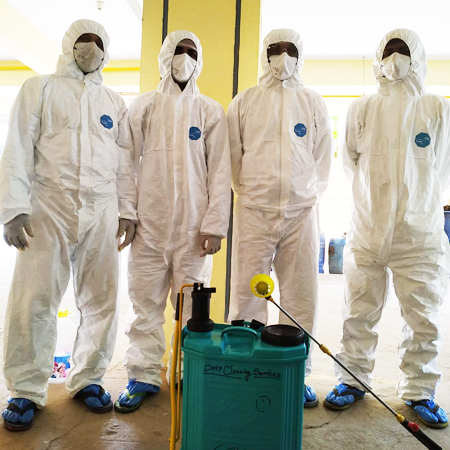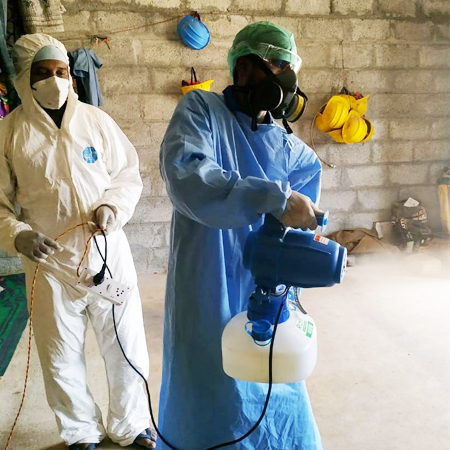
Microbial Aerial Disinfection, using Automatic Mist Sprayer machine and ULV machine is anti-virus and anti-bacterial and is designed to target and eliminate harmful microbes.
Only highly tranined staff using best in class products and equipped with adequate personal protective gear, perform designated tasks.
Ultra low volume method to ensure minimum use of chemical for maximum impact.
Highly effective in eliminating viruses including H1N1 and Coronavirus and over 400 strains of Bacteria.
Our experts conduct a detailed needs analysis of each customer site, identify hygiene requirements and structure an appropriate plan, delivered through proven processes.
